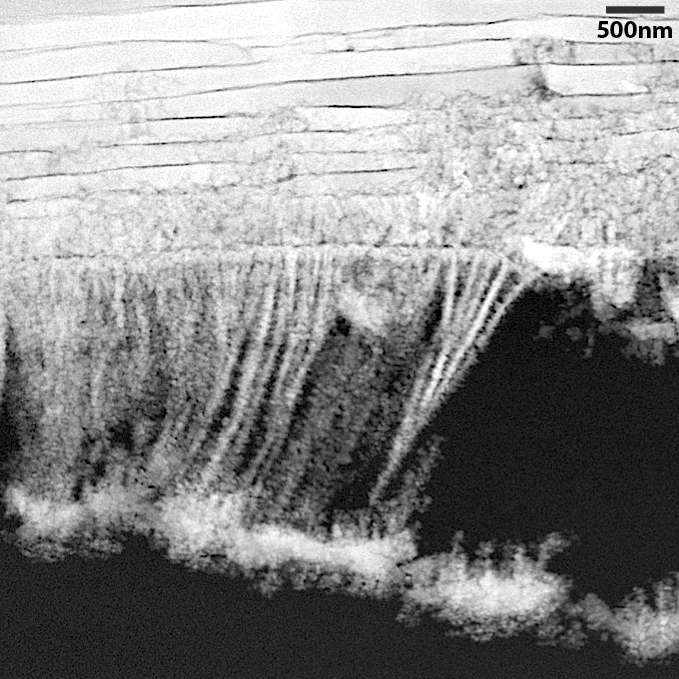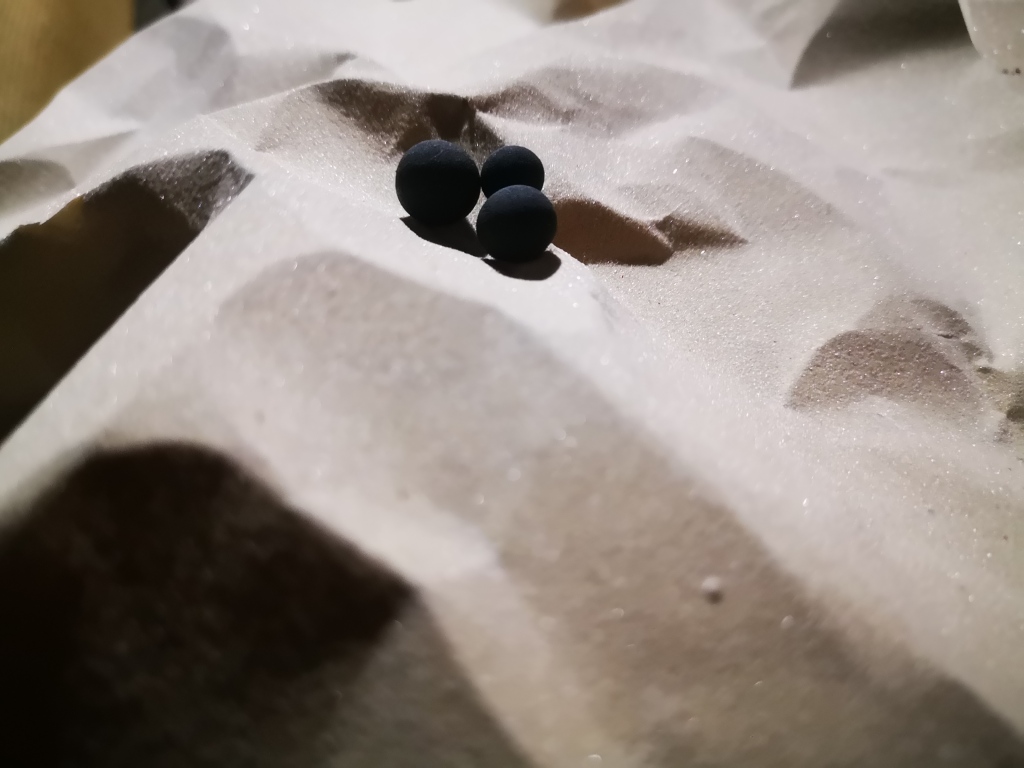During my two weeks at the Summer School, I have dived together with an outstanding group of artists and scientists, and curious beings into the world of art, biology and environmental health.
The fruits of these endeavors cumulated in a multi-media installation titled Black Pearl, depicting the origin of pearls from a queer, speculative, and non-Western perspective. Black Pearl allows the viewer to dive into a fictional underwater landscape via a guided mediation. It invites the listeners to become with and imagine more-than-human ways of co-existences.
My interest in investigating the origin of pearls sparked when reading an article about the production of artificial nacre (“mother-of-pearl”) using bacteria! (Is there something that bacteria cannot do?)
The recipe
The combination between the bacteria Sporosarcina pasteurii, a calcium source, and urea (a waste product excreted by the kidneys during urination) triggers the crystallization of calcium carbonate. To simulate the multiple layers of nacre (see image below), the crystallized calcium carbonate is placed into a solution of the bacteria Bacillus licheniformis (found in the soil and on bird feathers) and let grow in an incubator.

However, what had sounded like an exciting experiment, I was more intrigued by the fact that pearls are the result of abject bodies.
Pearls come into existence by differentiating between self and others. When an intruder slips between the permeable mantle of an oyster, the oyster’s body suddenly becomes the territory of trouble, targeting all of their thoughts. To get to know the stranger, they will tease it, question it, sense it from different angles, and eventually, the oyster will invite it into their home, covering it under layers of nacre – the-mother-of-pearl coats it, keeping it secure. The intruder becomes part of the body. Indistinguishable from oneself.
Coming from an academic background it was not easy for me to think of a more hands-on/material-based approach to give shape to my interest.
Initially, we experimented in the group with agar, plasticine, and clay which I tried to combine while using oysters, their shapes, and dotted surfaces as a casting form.

The counterintuitive materiality between light and heavy, artificially-alarming pink and earthly-greyish clay kindled my curiosity. I started to place around the oyster casts different objects, creating bit-by-bit a small universe inhabited by curious creatures.

With this tiny universe, I am proposing a more queer and speculative approach to the birth of the pearl referring to the Polynesian legend of the Black Pearl.
After 250 Million years of existence on Gaia, endless layers of traces from past and present touches will eventually form the Black Pearl.
The pearl is the result of separating the self from the other while including the previous abject into ones one metabolism. The inclination and acceptance of its otherness lead to a queering body that does not think and act in binary systems. Having both semen and eggs in their reproductive organs, they change from male to female back and forth over their lifetime (Ultimately, we also need to think of the pearl as a product of queering bodies).

After their death, their queerness remains in the universe. When oysters are eaten, the contained dopamine leads to horniness and open-mindfulness.
Said this, let’s open up to the world and try to feel into the co-existence of oyster and pearl…